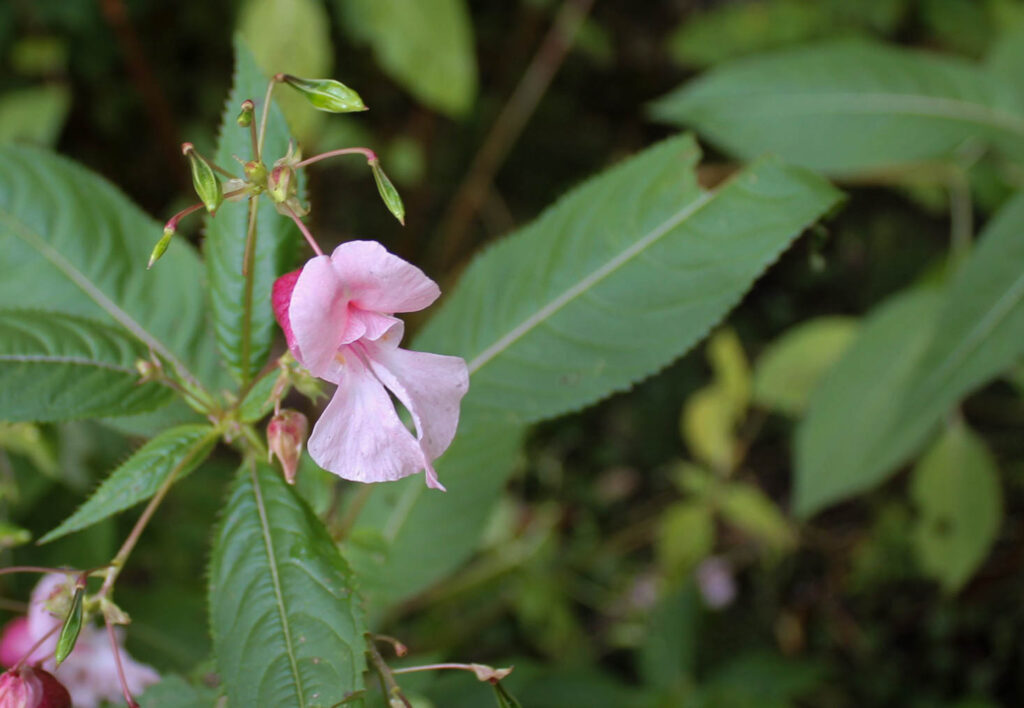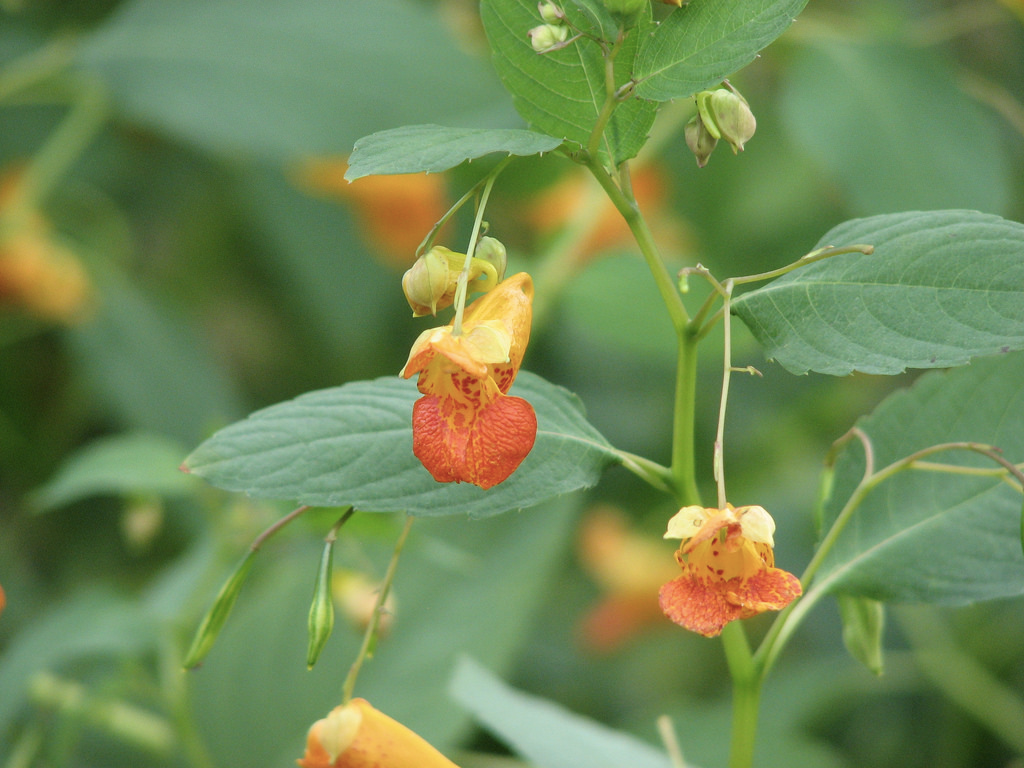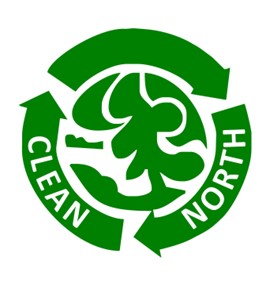
The Sault Ste. Marie Himalayan balsam Community Project is a city-wide environmental stewardship campaign that focuses on the prevention and management of Himalayan balsam. The Invasive Species Centre is teaming up with local organizations to tackle the growing Himalayan balsam population by educating the public on identification, prevention, reporting and management. The goal of this project is to inspire and encourage the community to get involved in protecting their local environment.
Year 1 – A Success Story

Year 2 – Get Involved!
Report and/or manage Himalayan balsam in Sault Ste Marie by September 15th 2024, for a chance to win! There are two $100 gift cards to be won for New North Greenhouse! Read the full contest rules here.
- Report: During the months of June, July and August, if you submit a report of Himalayan Balsam to iNaturalist you will be entered for a chance to win one of the New North Greenhouse gift cards! You will also increase our understanding of where Himalayan balsam is in Sault Ste Marie. Check out the iNaturalist project: SSM Himalayan Balsam Community Project · iNaturalist
- Pull Invasive Plants: Attend one of the public pull events to manage Himalayan balsam in our public areas and/or manage the plant on your own property! Participants of either the public pulls or individual efforts will be entered for chance to win the other New North Greenhouse gift cards! To get entered for pulling plants on your own property, tell us how many you pulled on our online form!
ENTER HERE
Thank you to all the volunteers who came out for the 2024 season!
Join us at a Himalayan Balsam Pull event in Sault Ste Marie! Great activity for all ages and interests! Learn how to actively protect our environment and native species! Bonus: Counts toward volunteer hours.

Please wear appropriate footwear, long pants and long sleeve shirt for managing Himalayan balsam. Gloves are provided.
Here is a list of the coordinates for the events (2023):
- Pull 1: Loonie Dollar Monument, Echo Bay, July 6, 11AM – 2PM
- Pull 2: Drake Street Park (Clark Creek) July 16, 2:00PM – 6:00PM
- Pull 3: Drake Street Park (Clark Creek) July 19, 12PM – 4PM
- Pull 4: Kensington Rd. carpool from TKC (Desbarats) July 24, 10AM-12PM
- Pull 5: Mike Zuke Park Storm Drain Creek July 27, 9:30AM – 12PM
- Pull 6: Bellevue Park – Sometime the week of August 12-16
- Pull 7: East End Park – August 27, 9AM – 3PM
#SSMPullHB2024
Learn more about Himalayan balsam below! If you are looking for additional information, please visit the species profile.
What is Himalayan Balsam?
Himalayan balsam is an invasive herbaceous plant that grows in dense stands, creating monocultures that crowd out native plant species and reduce biodiversity. Native to India, Himalayan balsam was initially introduced to North America as an ornamental garden plant and is currently found in eight provinces across Canada.

Learn more about Himalayan balsam by visiting our species profile here.

Himalayan Balsam has a hollow purple or red tinged stem which can be between 1-3 m tall.
A key ID feature of Himalayan balsam is its bright pink, orchid shaped flowers which are typically 3-4 cm tall and 2 cm broad. The leaves of this plant are between 5-23 cm long, green in colour and have toothed edges.

Himalayan balsam is in the impatient family, also known as a ‘touch-me-not’ plant because its mature seed capsules will explode when touched, dispersing seeds up to 5 m away from the parent plant.


A common look alike of this invasive plant is spotted jewelweed (right), a native ‘touch-me-not’ plant with yellow and orange orchid-like flowers. The leaves of jewelweed are smaller and have less jagged edges than the invasive Himalayan balsam (left).
- Reduces biodiversity
- Crowds out and outcompetes native plant species for resources
- Draws pollinators away from native plant species
- Contributes to shoreline erosion due its very shallow root system

Dense stands of Himalayan balsam create monocultures that crowd out native plants.

Shallow roots systems contribute to soil erosion along stream banks.
The spread of Himalayan balsam poses a major threat to the wellbeing of our environment. You can help by reporting any sightings.
Reporting to iNaturalist for a chance to win a gift card!
- Sign up for or login to your iNaturalist account and download the app on your mobile device.
- Take photos of Himalayan balsam.
- Select the green ‘Upload’ button and upload photos of the plant to create an observation card. You can also use the ‘Add’ button to create observation cards without photos.
- Choose what you saw from the suggestions or by searching for a name.
- Submit your observation.
Step by step instructions for reporting:
https://www.inaturalist.org/pages/getting+started
Alternative ways of reporting invasive species:
- EDDMapS: Early Detection and Distribution Mapping System
- Step by step instructions for reporting to EDDMapS: https://www.eddmaps.org/about/step_by_step.html
Invading Species Hotline: 1-800-563-7711
- Plan your management efforts in July and August before Himalayan balsam goes to seed.
- Small infestations can be controlled by hand pulling.
- Repeated cutting or mowing may be necessary to manage large stands.
- Any pulled or cut plants should be placed in construction grade garbage bags and left on a hard surface (i.e. trailer, deck, driveway) for up to two weeks before disposal.
There are small everyday habits we can impliment to make a huge difference in preventing the spread of invasive plants.
- Avoid using invasive plants in gardens and landscaping. View the Local Grow Me Instead guide to find native and non-invasive alternatives to Himalayan balsam for your garden.
- When walking or hiking, stay on trails and keep your pets on a leash. After, use a boot brush to clean your shoes to get rid of any potential seeds.

This project is being funded by the city of Sault Ste. Marie.








